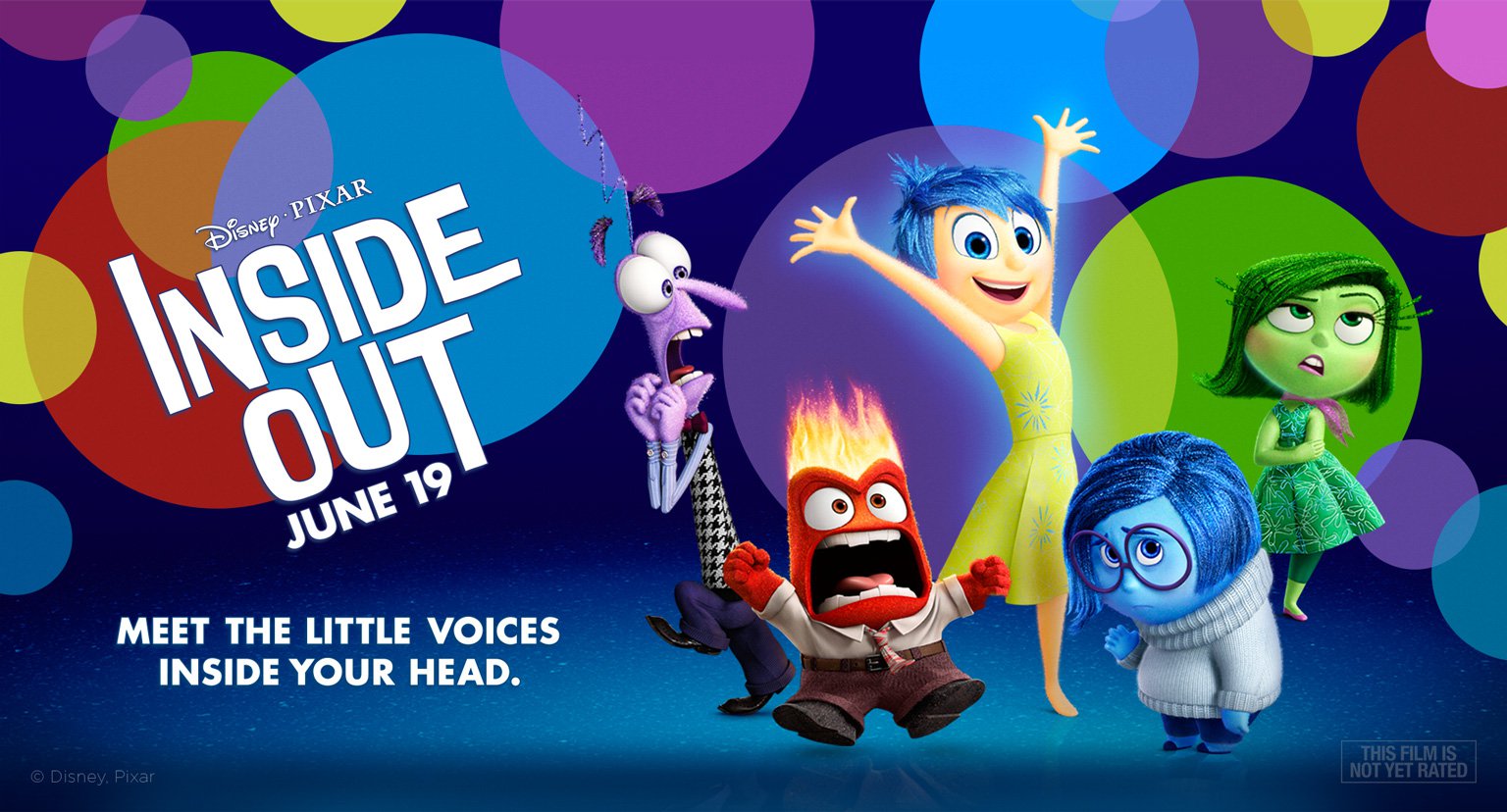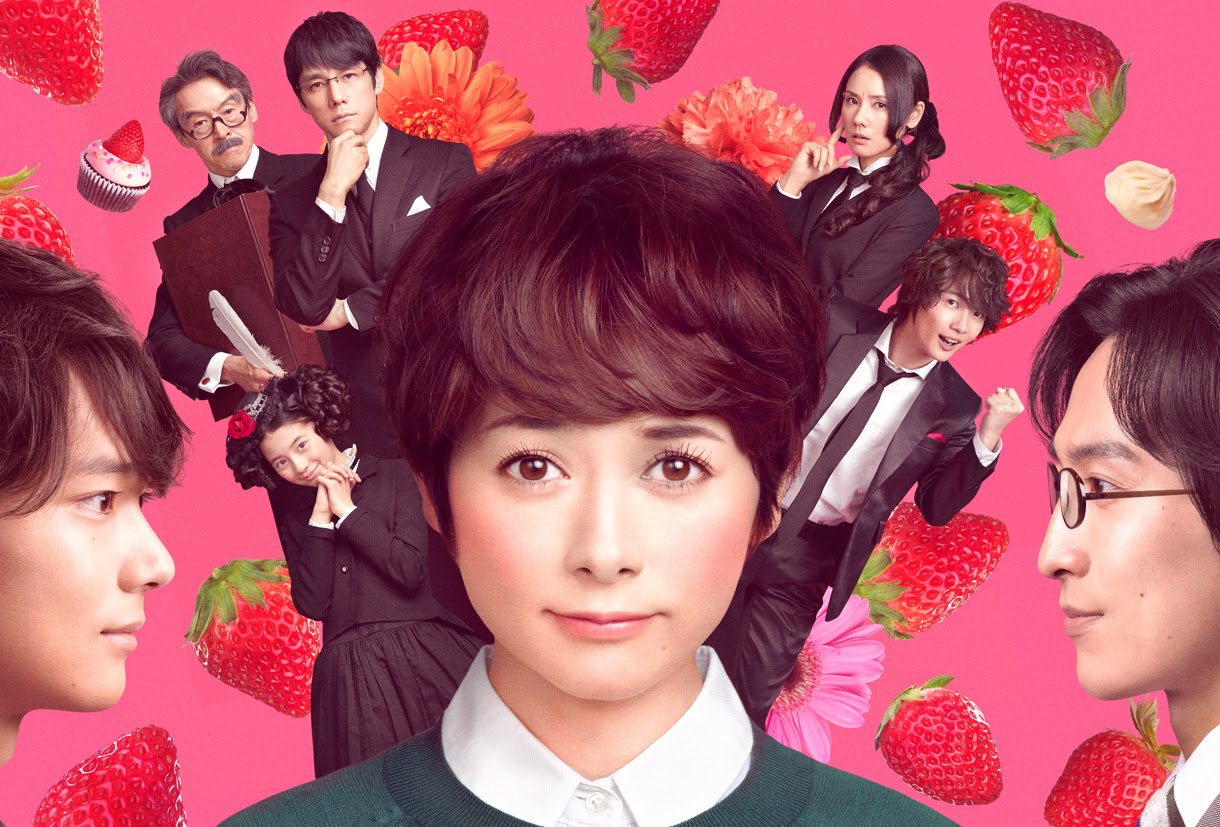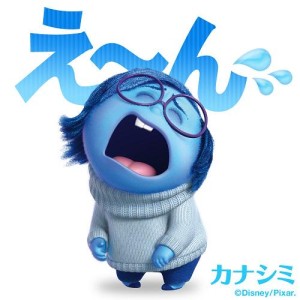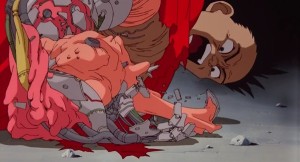Inside Out
July 23, 2015 · 0 comments
By Andrew Osmond.
 Pixar’s new film, Inside Out, has had some localised changes in Japan, where it opened a week ago under the name Inside Head. In the English version, for example, there’s a gag that turns on kids’ dislike of the noble vegetable broccoli, which is rather popular in Japan. (Japan, remember, is the country which made the daikon radish into a demigod.) Reportedly, there’s been some digital altering to turn the broccoli into bell peppers in Japan, although it’s too late for the Japanese trailer. Warning: this trailer is rather spoilery, though it exemplifies Japan’s tendency to play up a cartoon’s drama over its comedy.
Pixar’s new film, Inside Out, has had some localised changes in Japan, where it opened a week ago under the name Inside Head. In the English version, for example, there’s a gag that turns on kids’ dislike of the noble vegetable broccoli, which is rather popular in Japan. (Japan, remember, is the country which made the daikon radish into a demigod.) Reportedly, there’s been some digital altering to turn the broccoli into bell peppers in Japan, although it’s too late for the Japanese trailer. Warning: this trailer is rather spoilery, though it exemplifies Japan’s tendency to play up a cartoon’s drama over its comedy.
As most readers must know by now, Inside Out depicts of the mind of an eleven year-old girl, and in particular her emotions. Pixar turns them into five cartoon characters: effervescent Joy, turtle-necked blue beanbag Sadness, sardonic mean girl Disgust, neurotic sprout Fear and volcanic short-fuse Anger. This quintet pilot Riley through her life, which has an anime resonance straight off. You could see Inside Out as a metaphysical robot show, in which (contra Voltron) all five pilots form the ‘head.’
As critics have pointed out, Inside Out isn’t the first story to come up with this kind of idea. Precedents include the 1990s American sitcom Herman’s Head; the British Beano/Dandy comic-strip “The Numskulls”; and – most fascinating – the Disney wartime cartoon Reason and Emotion (1943), with Neanderthal gender politics and a rousing anti-Nazi message.
Some Japanese viewers are reportedly convinced that Inside Out rips off a very recent local film, Poison Berry in My Brain (aka Nonai Poison Berry — pictured below). Like Pixar’s film, Poison Berry represents the inner life of a conflicted woman as five warring characters. The film opened in Japan this May, based on a 2009 manga by Setona Mizushiro. But for the record, there’s a likelier ‘unconscious’ inspiration for Inside Out… “Cranium Command”, a now-closed attraction which played at Walt Disney World in the 1990s and noughties. Depicting a little boy’s mind, it had some traditional pre-Pixar cartooning by a youngster called Pete Docter… who later made Inside Out.
 Anime has rarely personified the human psyche in quite that way. However, there’s the excellent series The Tatami Galaxy, directed by Masaaki Yuasa from a novel by Tomihiko Morimi. It includes a cartoony cowboy character, ‘Johnny,’ who represents the high-sexed libido of the male student hero. You can see Johnny in the show’s title sequence; weirdly, he looks like Woody in Toy Story. We’ll pause for the obvious (and probably unintended) joke.
Anime has rarely personified the human psyche in quite that way. However, there’s the excellent series The Tatami Galaxy, directed by Masaaki Yuasa from a novel by Tomihiko Morimi. It includes a cartoony cowboy character, ‘Johnny,’ who represents the high-sexed libido of the male student hero. You can see Johnny in the show’s title sequence; weirdly, he looks like Woody in Toy Story. We’ll pause for the obvious (and probably unintended) joke.
More broadly, Satoshi Kon strove to represent the human mind for adults, though he used rather different methods from Pixar. Inside Out strives to clarify its complex ideas, while Kon delighted in ambiguity and confusion. Paprika anticipated Inside Out in presenting dreams as movies. Perfect Blue, Kon’s psycho-thriller, also dealt in the same territory. In Pixar terms, Perfect Blue shows what’d happen if you met one of your emotional head-avatars in person… and found that it was a monster (except that Kon’s avatar belongs to more than one person.)
If these sounds like adult comparisons, then Inside Out is aimed at adults too, arguably more than it is at children. It’s not just the high number of conceptually sophisticated one-liners (although there are a hell of a lot). It’s also because of a trick that the film plays with its characters. Joy, Sadness, Fear, Disgust and Anger may ‘belong’ to a child’s mind, but these emotions are characterised as adults. For example, in the scenes of Riley’s infancy, the emotions already appear and speak as adults, not as babies. (The Reason and Emotion toon shows the alternative.)
 Inside Out is an extension of Pixar’s Toy Story films, whose toys were similarly grown-ups whose existence centred around a child’s happiness. In other words, they were mums and dads. This is obvious in Inside Out’s most tear-jerking scene, which features the character of Joy alone, holding the centre of a darkened stage. We won’t spoil it, but it’s impossible to watch the scene and think of Joy as any kind of child. Rather, she is, clearly, an adult mother.
Inside Out is an extension of Pixar’s Toy Story films, whose toys were similarly grown-ups whose existence centred around a child’s happiness. In other words, they were mums and dads. This is obvious in Inside Out’s most tear-jerking scene, which features the character of Joy alone, holding the centre of a darkened stage. We won’t spoil it, but it’s impossible to watch the scene and think of Joy as any kind of child. Rather, she is, clearly, an adult mother.
The point is blurred by Pixar’s brilliant scripting, in which the characters’ verbal (and physical!) arguments feel like believable internal debates, often going on while Riley herself is silent. The film conveys the paradox that Riley both is and isn’t her emotions, unlike Disney’s Pinocchio, where the puppet’s cricket conscience was a separate character. It’s closer to Kiki’s Delivery Service, where you might argue that the voice of Jiji the cat, which only Kiki hears, is really the girl’s own inner voice, more nervous than her voice out loud. In The Art of Kiki’s Delivery Service, Miyazaki describes Jiji as representing “an immature part” of Kiki.
However, such a reading would only work for the Japanese-language Kiki, where Jiji was voiced in cute-squeaky style by the actress Rei Sakuma (Shampoo in Ranma ½). In the American dub by Disney, Jiji was a sarcastic patriarch voiced by The Simpsons’ Phil Hartman, which changed the relationship completely. This may reflect how Hollywood cartoon movies often favour parents’ viewpoints over children’s, even in films supposedly made for children.
Disney cartoon kids are often orphans, but have many anthropomorphic parents: Jiminy Cricket in Pinocchio, Bagheera and Baloo in Jungle Book, Bernard and Bianca in The Rescuers. Pixar stepped up the trend through Toy Story and Docter’s own film Monsters Inc., where kids are raised by toys and monsters. Even in Pixar’s The Incredibles, the main superheroes are Mum and Dad, not their children. Inside Out makes the trend blatant by privileging the parental perspective in a film about the mind of a child.
This child, Riley, is portrayed unusually for a Hollywood cartoon, but much less so for anime. Inside Out is about the end of her childhood, her moving towards adolescence, and the uncertainty and anger she feels. To make this less abstract, the script ties this in with Riley’s parents moving from Minnesota to San Francisco (Pixar’s real-life home); Riley’s troubles fitting in; and her realisation that a treasured part of her life is over and gone forever. In her head, this plays through the shifting relationship between Riley’s main emotions, Joy and Sadness.
 Anime is different; it prefers to depict troubled kids at their own level. For many fans, anime is practically defined by angsty, angry teenage boys. In Akira, Tetsuo’s incontinent mental and physical changes were animated as a monster in an Olympic stadium. He was followed by Shinji in Evangelion, Light in Death Note, Eren in Attack on Titan and many more. The boy Ame in Wolf Children is interesting; he’s the reverse of Riley, sad in childhood, only finding joy as he grows up, though he still breaks his mother’s heart.
Anime is different; it prefers to depict troubled kids at their own level. For many fans, anime is practically defined by angsty, angry teenage boys. In Akira, Tetsuo’s incontinent mental and physical changes were animated as a monster in an Olympic stadium. He was followed by Shinji in Evangelion, Light in Death Note, Eren in Attack on Titan and many more. The boy Ame in Wolf Children is interesting; he’s the reverse of Riley, sad in childhood, only finding joy as he grows up, though he still breaks his mother’s heart.
But closer to Riley, there are girls like Chihiro in Spirited Away, Momo in A Letter to Momo and Anna in Ghibli’s upcoming When Marnie was There. As I discuss elsewhere on this blog, these three girls – all about Riley’s age – share an animation director, Masashi Ando, who specialises in “murky, painful” emotions. Chihiro, Momo and Anna also spend much of their respective films being unhappy, more than a Hollywood toon could allow. Inside Out sidesteps the problem by telling most of its story through the aggressively cheerful Joy, not the increasingly mopey Riley.
Interestingly, though, Joy’s voice-actress Amy Poehler has publicly praised Pixar for showing Riley’s sadness and distress. At a BFI talk, Poehler highlighted the scenes where Riley defies her parents’ encouragement to stay their ‘happy girl’ and bury her feelings. In Ghibli, even cheery Kiki, or Mei and Satsuki in Totoro, go to murky, painful places at times.
 Anime films don’t explain everything; some deliberately leave gaps in the psychological process. Take Ghibli movies. We don’t know why Kiki loses her flying powers. In Grave of the Fireflies, we wonder why the boy is so foolhardy that he quits society in wartime. In Spirited Away, there’s a strange scene where Chihiro cries huge tears while frantically devouring rice balls, though there’s a clue in the choice of food; rice balls are a homely, nostalgic food. (They’d remind Japanese viewers of the bento packed lunches that parents – traditionally mothers – make for their children.) Arguably the rice balls makes a similar spiritual point to the sad/happy denouement of Inside Out, only from the outside in.
Anime films don’t explain everything; some deliberately leave gaps in the psychological process. Take Ghibli movies. We don’t know why Kiki loses her flying powers. In Grave of the Fireflies, we wonder why the boy is so foolhardy that he quits society in wartime. In Spirited Away, there’s a strange scene where Chihiro cries huge tears while frantically devouring rice balls, though there’s a clue in the choice of food; rice balls are a homely, nostalgic food. (They’d remind Japanese viewers of the bento packed lunches that parents – traditionally mothers – make for their children.) Arguably the rice balls makes a similar spiritual point to the sad/happy denouement of Inside Out, only from the outside in.
As a final point, it’s worth noting that Spirited Away and Inside Out belong to one fantasy sub-genre. They take place in surreal fantasy worlds, based on the dreams and perceptions of children, arguably descended from Alice in Wonderland, minus the maths and satire. They’re from the same branch of cinemas as Labyrinth, Coraline and Time Bandits (and for older viewers, Pan’s Labyrinth and Company of Wolves). Add the CG anime Oblivion Island, which anticipates Inside Out’s interest in memory, forgetting, and playmates thrown aside like Puff the Magic Dragon.
But while I admired Inside Out, and would recommend anyone to see the film, I found its fantasy landscape a touch underwhelming. Maybe Inside Out’s world-building is just too ingenious, too conceptually complete. It rationalises its dream furniture, its metaphorical buildings and chasms, which older fantasies leave fuzzier, more random and autonomous. When a magic flying train appears in Inside Out, it’s immediately named the Train of Thought. It’s a funny idea, but it’s not like Spirited Away’s train over the sea which seemed to be… anything you wanted. And in a film about a child’s mind, shouldn’t there be room for that?
Andrew Osmond is the author of 100 Animated Feature Films.
anime, cartoons, Ghibli, Inside Out, Japan, Nonai Poison Berry, Pixar, Poison Berry in my Brain
Leave a Reply